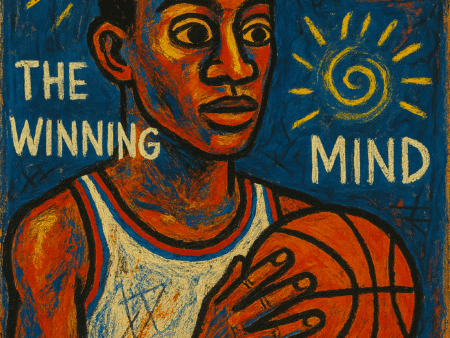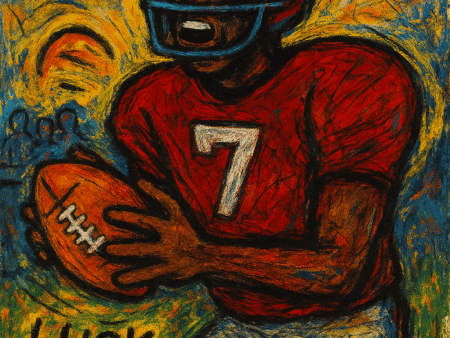As the 2025 Fantasy Football season heats up, owners preparing for Best Ball tournaments will need to make strategic picks from a deep pool of talent. Let’s dive into the top 100 rankings and review the potential pros and cons of each player, focusing on how these insights can help your fantasy team.
1. Ja’Marr Chase (CIN – WR)
- Pros: One of the most dominant wide receivers in the league, Chase’s deep threat ability and connection with QB Joe Burrow make him a consistent top scorer.
- Cons: The Bengals have a crowded offense, and while Chase’s talent is undeniable, there’s always a risk of inconsistency when defenses focus on him.
2. Bijan Robinson (ATL – RB)
- Pros: A dynamic rookie with all-around skills, Robinson is poised to be a centerpiece of Atlanta’s offense, especially in the running game.
- Cons: The Falcons’ run-heavy offense could limit his overall upside in PPR formats, and there’s the potential for rookie growing pains.
3. Saquon Barkley (PHI – RB)
- Pros: Barkley’s ability as a dual-threat RB makes him valuable. He’s the focal point of the Giants’ offense and a workhorse on the ground.
- Cons: Injury concerns have hovered over Barkley, and with limited passing game support, his value could be capped in high-scoring games.
4. Jahmyr Gibbs (DET – RB)
- Pros: Gibbs is a versatile weapon who could excel in both the run and pass game. His speed and receiving skills are perfect for a high-octane offense like Detroit’s.
- Cons: The presence of veteran David Montgomery may eat into Gibbs’ total touches, especially in goal-line situations.
5. Justin Jefferson (MIN – WR)
- Pros: Jefferson is consistently among the most productive wideouts in the league. He’s a go-to option for Kirk Cousins and has the ability to rack up massive yardage.
- Cons: Despite his immense talent, the Vikings’ offensive scheme might occasionally limit his ceiling in tougher matchups.
6. CeeDee Lamb (DAL – WR)
- Pros: Lamb is Dak Prescott’s number one target, boasting elite route-running skills and big-play potential.
- Cons: Dallas’ offensive system relies heavily on the run game, which could limit Lamb’s volume in certain matchups.
7. Puka Nacua (LAR – WR)
- Pros: As a rising star in LA, Nacua is an emerging favorite for Matthew Stafford, showcasing strong hands and excellent separation.
- Cons: The Rams’ offense, with aging stars and a shaky O-line, may struggle to sustain consistent production, potentially limiting Nacua’s upside.
8. Amon-Ra St. Brown (DET – WR)
- Pros: St. Brown’s chemistry with QB Jared Goff and his ability to dominate in short and intermediate routes make him a solid, high-volume target.
- Cons: Detroit’s run-heavy offense and the emergence of other weapons may limit his overall target share.
9. Nico Collins (HOU – WR)
- Pros: As the primary target in Houston’s young offense, Collins could see a ton of volume, especially with a QB on the rise.
- Cons: The lack of established offensive consistency in Houston may hinder his production, especially with a rookie QB.
10. Derrick Henry (BAL – RB)
- Pros: The King is still one of the most physically imposing backs in the NFL, with the ability to dominate on the ground and take over games.
- Cons: At 30 years old, Henry is on the tail end of his career, and injuries or a decline in performance could limit his impact this season.
11. Ashton Jeanty (LV – RB)
- Pros: Jeanty is a strong, versatile runner with the ability to thrive in both passing and running situations.
- Cons: Being on a team with a lot of competition in the backfield could reduce his touches in critical moments.
12. Malik Nabers (NYG – WR)
- Pros: Nabers has a unique ability to make explosive plays and could quickly develop into a key target for the Giants.
- Cons: As a rookie, his production may vary until he establishes himself in the NFL.
13. Brian Thomas Jr. (JAC – WR)
- Pros: A high-ceiling wideout in Jacksonville’s offense, Thomas has a lot of potential for big plays in the Jaguars’ pass-heavy attack.
- Cons: Jacksonville’s offense has multiple weapons, which could limit his weekly target volume.
14. Christian McCaffrey (SF – RB)
- Pros: McCaffrey is one of the most well-rounded RBs in the league, excelling in both the rushing and receiving game.
- Cons: His injury history raises some concerns, and the 49ers’ crowded offense may limit his overall workload.
15. Jonathan Taylor (IND – RB)
- Pros: Taylor is one of the most explosive backs in the league, and with a solid offensive line, he can dominate any game.
- Cons: The Colts’ offense is in transition, and Taylor’s workload may be affected by the team’s ability to establish the run.
16. Drake London (ATL – WR)
- Pros: London is the top option in a run-heavy offense and could be a massive red-zone threat in 2025.
- Cons: Atlanta’s commitment to the run game may limit his overall targets and upside in high-scoring matchups.
17. Josh Jacobs (GB – RB)
- Pros: Jacobs is a workhorse back who proved his worth as a top-tier fantasy player last season. He is a key part of the Raiders’ offense.
- Cons: The Raiders’ offensive instability could affect his consistency, and Jacobs may not see as many opportunities with other weapons in the mix.
18. Brock Bowers (LV – TE)
- Pros: A top prospect with elite athleticism, Bowers is a great pass-catching tight end who can dominate as a target in the red zone.
- Cons: Rookie tight ends often face learning curves, and his role in the offense may fluctuate as he adjusts.
19. De’Von Achane (MIA – RB)
- Pros: Achane offers explosive speed and could become a major weapon in Miami’s fast-paced offense.
- Cons: His smaller frame and limited size may limit his ability to handle a heavy workload in the NFL.
20. A.J. Brown (PHI – WR)
- Pros: Brown is a physical receiver with a high ceiling. He’s a key part of a well-balanced offense in Philadelphia.
- Cons: The Eagles’ run-heavy attack could reduce his overall target volume, and there’s always a risk of inconsistency.
21. Bucky Irving (TB – RB)
- Pros: Irving brings solid versatility and the ability to break tackles in tight situations.
- Cons: He faces competition in the backfield, which could limit his touches and scoring opportunities.
22. Ladd McConkey (LAC – WR)
- Pros: McConkey has excellent speed and could become a key piece in a high-powered offense like the Chargers’.
- Cons: With multiple receiving options in Los Angeles, McConkey may not see the volume needed to excel.
23. Chase Brown (CIN – RB)
- Pros: Brown is a well-rounded back with good vision and balance. He has the potential to thrive in a solid Cincinnati offense.
- Cons: Sharing touches with Joe Mixon and the rest of the backfield may limit his fantasy value.
24. Tee Higgins (CIN – WR)
- Pros: A big-bodied receiver who plays alongside Ja’Marr Chase, Higgins offers immense value in both red-zone and yardage situations.
- Cons: As the second target in a crowded offense, Higgins may see fewer opportunities than other top-tier receivers.
25. Kyren Williams (LAR – RB)
- Pros: Williams has good hands and is a solid option in both the rushing and passing game.
- Cons: The Rams’ offensive instability could affect his consistency, and he faces competition for touches in the backfield.
26. Trey McBride (ARI – TE)
- Pros: McBride has the potential to be a top receiving option for Arizona, offering high upside in the passing game.
- Cons: Arizona’s offense lacks consistency, and McBride may be used sparingly depending on the team’s offensive direction.
27. Josh Allen (BUF – QB)
- Pros: Allen is a dynamic dual-threat quarterback with the ability to make plays both in the air and on the ground. He’s consistently among the top fantasy quarterbacks.
- Cons: His aggressive playing style leads to injury risk, and occasional decision-making lapses can hurt his fantasy consistency.
28. Lamar Jackson (BAL – QB)
- Pros: Jackson’s rushing ability gives him immense upside every week, and he’s a key part of the Ravens’ offense.
- Cons: Baltimore’s offense is more run-oriented, which could limit his passing attempts and overall fantasy ceiling.
29. Jaxon Smith-Njigba (SEA – WR)
- Pros: As a talented rookie, Smith-Njigba has explosive potential and could become a reliable option in Seattle’s offense.
- Cons: Seattle’s offense has multiple weapons, and it’s unclear how much volume Smith-Njigba will receive in his first year.
30. Jayden Daniels (WAS – QB)
- Pros: A dual-threat quarterback with significant rushing potential, Daniels can put up fantasy points with his legs as well as his arm.
- Cons: As a rookie, Daniels may take time to adjust to the NFL, and his passing accuracy remains a question mark.
31. Rashee Rice (KC – WR)
- Pros: Rice has strong hands and could emerge as a key target in the Chiefs’ offense.
- Cons: With so many receiving options in Kansas City, his role may be inconsistent as he competes for targets.
32. George Kittle (SF – TE)
- Pros: Kittle is a top-tier tight end with both strong blocking ability and the potential to rack up big yards in the passing game.
- Cons: The 49ers’ crowded offense and run-heavy approach could limit his overall production.
33. James Cook (BUF – RB)
- Pros: Cook is a versatile back with good receiving skills, making him a solid option in PPR leagues.
- Cons: His role in Buffalo’s offense may be inconsistent, and he faces competition from other backs for touches.
34. Breece Hall (NYJ – RB)
- Pros: Hall is a dynamic playmaker with excellent vision and burst, making him a potential star in the Jets’ offense.
- Cons: After recovering from a serious injury, it’s uncertain how quickly he will return to peak form.
35. Garrett Wilson (NYJ – WR)
- Pros: Wilson is a highly talented, fast receiver with big-play potential. He could be the top target for a growing Jets offense.
- Cons: Inconsistent QB play may hurt Wilson’s fantasy upside, especially if the offense struggles to take off.
36. Tyreek Hill (MIA – WR)
- Pros: Hill is a game-changing deep threat with explosive speed, capable of putting up huge numbers in any given week.
- Cons: Miami’s offense is still evolving, and Hill’s reliance on explosive plays can result in inconsistent week-to-week performance.
37. Terry McLaurin (WAS – WR)
- Pros: McLaurin is a strong, reliable wideout capable of producing high fantasy numbers with good volume.
- Cons: Washington’s offense lacks consistency, and McLaurin’s production may suffer as a result.
38. Mike Evans (TB – WR)
- Pros: Evans is a big-play receiver and a consistent red-zone target. His ability to stretch the field is key for Tampa Bay’s passing attack.
- Cons: With a new QB and changes to Tampa Bay’s offense, Evans’ production may vary week to week.
39. Jalen Hurts (PHI – QB)
- Pros: Hurts is a top-tier dual-threat QB who scores consistently in both the passing and rushing games.
- Cons: The run-heavy offense in Philadelphia could limit his overall passing volume, though his rushing upside helps mitigate this.
40. Davante Adams (LAR – WR)
- Pros: Adams is a top receiver with excellent route-running and ability to make big plays in the red zone.
- Cons: The Raiders’ offense is underperforming, and Adams may face increased defensive attention as a result.
41. Marvin Harrison Jr. (ARI – WR)
- Pros: Harrison has elite athleticism and strong hands, and could quickly become a key part of Arizona’s offense.
- Cons: As a rookie, his role in the offense may take time to develop, and competition for targets could limit his production.
42. Chuba Hubbard (CAR – RB)
- Pros: Hubbard is a solid back with the ability to contribute in both the run and pass game.
- Cons: With Miles Sanders in the backfield, Hubbard may not see enough touches to be consistent in fantasy production.
43. Joe Mixon (HOU – RB)
- Pros: Mixon is an experienced back with great ability as a rusher and receiver, and he plays for a high-scoring team in Cincinnati.
- Cons: With a crowded backfield, Mixon’s touches may be limited, especially in the red zone.
44. Alvin Kamara (NO – RB)
- Pros: Kamara is an excellent receiving back and a threat in both the short and long game. He’s consistent in PPR leagues.
- Cons: Kamara’s age and injury history may catch up with him, and his usage in the running game could be capped.
45. DJ Moore (CHI – WR)
- Pros: Moore is a reliable receiver who should see a lot of targets as Chicago’s top option, especially with an improved QB.
- Cons: The Bears’ offense is still finding its identity, and Moore’s upside may be limited by the team’s overall offensive struggles.
46. Kenneth Walker III (SEA – RB)
- Pros: Walker is a dynamic and powerful runner with big-play ability, and he could be a key piece of Seattle’s offense.
- Cons: Seattle’s offense may limit his volume, especially in games where they struggle to establish the run.
47. DK Metcalf (PIT – WR)
- Pros: A physical freak with the ability to take over a game, Metcalf is a huge threat in both the short and long game.
- Cons: The inconsistency of Seattle’s passing game may result in fluctuating performance, especially against stronger defenses.
48. Chris Godwin (TB – WR)
- Pros: Godwin is a reliable receiver and can contribute heavily in PPR formats. He’s a great possession receiver with excellent hands.
- Cons: Godwin may see fewer deep targets with the emergence of other playmakers, limiting his ceiling in non-PPR formats.
49. James Conner (ARI – RB)
- Pros: Conner is a powerful and gritty back who can handle a heavy workload, especially near the goal line.
- Cons: Arizona’s offensive struggles may limit his fantasy value, and injuries could always be a concern.
50. Zay Flowers (BAL – WR)
- Pros: Flowers is a dynamic playmaker with strong route-running ability and could emerge as a top option in Baltimore’s offense.
- Cons: The crowded receiving corps in Baltimore and the run-first offense may limit his overall target volume.
51. David Montgomery (DET – RB)
- Pros: Montgomery is a reliable, hard-nosed runner who thrives in short-yardage and goal-line situations.
- Cons: His role in Detroit’s offense may be capped by the presence of Jahmyr Gibbs, limiting his overall upside.
52. Jameson Williams (DET – WR)
- Pros: A speedster with big-play potential, Williams is a deep threat who could break out if Detroit’s passing game opens up.
- Cons: Injury concerns and inconsistency in his rookie season make him a high-risk, high-reward pick.
53. Joe Burrow (CIN – QB)
- Pros: Burrow has become one of the most reliable and efficient QBs in the league, with excellent weapons at his disposal.
- Cons: Cincinnati’s offensive line struggles at times, which could limit Burrow’s upside in certain matchups.
54. DeVonta Smith (PHI – WR)
- Pros: Smith is a smooth route runner and a reliable second option for Jalen Hurts. His ability to create separation makes him a consistent contributor.
- Cons: As the second receiver on a run-heavy team, his weekly target volume can be inconsistent.
55. Sam LaPorta (DET – TE)
- Pros: LaPorta is an emerging talent in Detroit’s offense, with excellent hands and route-running ability.
- Cons: The presence of other pass-catching weapons may keep LaPorta from reaching his full potential this season.
56. Jaylen Waddle (MIA – WR)
- Pros: Waddle is one of the fastest players in the NFL and a big-play threat who thrives in Miami’s high-tempo offense.
- Cons: His ceiling could be capped by Tyreek Hill’s dominant presence in the passing game.
57. Tony Pollard (TEN – RB)
- Pros: Pollard is an explosive, versatile back who can contribute as both a runner and receiver.
- Cons: The Cowboys’ offense is largely dependent on the run game, but with other playmakers around, Pollard’s target volume may fluctuate.
58. Omarion Hampton (LAC – RB)
- Pros: Hampton is a strong, tough back who could be a good option for teams that prioritize power running.
- Cons: He may struggle to carve out a consistent role in the backfield, given his competition.
59. Courtland Sutton (DEN – WR)
- Pros: Sutton is a big-bodied receiver with the ability to go up and get contested catches, making him a red-zone target.
- Cons: Denver’s offensive struggles may affect his overall production, and he faces competition from other pass-catchers.
60. Kaleb Johnson (PIT – RB)
- Pros: Johnson offers speed and agility with potential for breakout plays in a developing Pittsburgh offense.
- Cons: With a crowded backfield, Johnson may see limited opportunities and inconsistent touches.
61. Isiah Pacheco (KC – RB)
- Pros: Pacheco is explosive and has the potential to be a strong, volume-based back in Kansas City’s high-powered offense.
- Cons: The Chiefs’ pass-heavy attack could reduce his touches, especially in games with high scoring.
62. D’Andre Swift (CHI – RB)
- Pros: Swift is a dual-threat back who is highly productive in the passing game, making him valuable in PPR formats.
- Cons: Swift has a history of injuries, and his role in the backfield may fluctuate with the team’s offensive scheme.
63. Travis Hunter (JAC – WR)
- Pros: Hunter has elite athleticism and could emerge as a top weapon in Jacksonville’s offense, thanks to his versatility.
- Cons: As a rookie, it might take him some time to establish himself in the NFL and find consistent playing time.
64. RJ Harvey (DEN – RB)
- Pros: Harvey is a well-rounded back with solid vision and power, and could be a strong contributor if given the chance.
- Cons: Denver’s backfield committee makes his role uncertain, and his usage could be inconsistent.
65. Chris Olave (NO – WR)
- Pros: Olave is an explosive route runner and a potential top option for New Orleans.
- Cons: His success will depend on the consistency of New Orleans’ quarterback play, which may fluctuate.
66. Xavier Worthy (KC – WR)
- Pros: Worthy has great speed and excellent hands, with the potential to become a go-to target in Kansas City’s offense.
- Cons: The Chiefs have several other weapons, which could limit his fantasy volume in a crowded receiving corps.
67. Rome Odunze (CHI – WR)
- Pros: Odunze is a reliable receiver with good route-running and reliable hands. He could emerge as a key target in Chicago’s offense.
- Cons: The Bears’ offense has struggled, and Odunze may need more consistency from the QB position to thrive.
68. George Pickens (DAL – WR)
- Pros: Pickens is a big-play threat with excellent hands and physicality. He has the potential to be a top target for Dak Prescott.
- Cons: With the Cowboys’ run-heavy offense, Pickens may see fewer targets, especially in games where the ground game dominates.
69. Aaron Jones Sr. (MIN – RB)
- Pros: Jones is an explosive back who can contribute both in the rushing and passing games, making him valuable in PPR formats.
- Cons: Age and the presence of younger backs could limit his opportunities in a crowded Packers backfield.
70. Baker Mayfield (TB – QB)
- Pros: Mayfield has strong weapons around him in Tampa Bay, and he’s a capable passer with the potential to produce solid numbers.
- Cons: He lacks the mobility of top-tier QBs, and the Bucs’ offensive line could limit his potential to consistently put up big numbers.
71. Patrick Mahomes II (KC – QB)
- Pros: Mahomes is a playmaking machine with the ability to lead high-scoring games, making him a top fantasy QB.
- Cons: As the focal point of the offense, Mahomes is constantly under pressure, which can lead to turnovers or inconsistent performances.
72. TreVeyon Henderson (NE – RB)
- Pros: Henderson is a solid, well-rounded back with speed and vision. He has the potential to be a featured player in New England’s offense.
- Cons: The Patriots’ offense could limit his fantasy ceiling, and the backfield competition makes his workload uncertain.
73. T.J. Hockenson (MIN – TE)
- Pros: Hockenson is a reliable red-zone target with strong hands, and he’s often a featured part of Minnesota’s passing game.
- Cons: The Vikings’ offense is pass-heavy, but Hockenson may face competition from other weapons, limiting his overall ceiling.
74. Calvin Ridley (TEN – WR)
- Pros: Ridley is a talented route runner and deep threat with the potential to emerge as a top option in Jacksonville’s offense.
- Cons: After a long layoff from football, it’s unclear how quickly he will return to his previous form.
75. Bo Nix (DEN – QB)
- Pros: Nix is an up-and-coming QB with solid potential, capable of making plays with both his arm and legs.
- Cons: As a rookie, Nix may take time to adjust to the NFL, and he faces competition in the QB room.
76. Quinshon Judkins (CLE – RB)
- Pros: Judkins is a powerful back with good vision and burst. He could have a role in Cleveland’s offense if he’s given the chance.
- Cons: The presence of other backs in Cleveland’s rotation could reduce his overall opportunities and consistency.
77. Jordan Addison (MIN – WR)
- Pros: Addison is a talented route runner who could emerge as a strong second target for Justin Jefferson in Minnesota’s offense.
- Cons: As the secondary option, his target volume may be inconsistent, limiting his ceiling in certain games.
78. Brian Robinson Jr. (WAS – RB)
- Pros: Robinson is a tough, downhill runner with the ability to gain tough yards and score on short-yardage situations.
- Cons: Robinson’s value could be limited by Washington’s offense, and his receiving role may not be consistent enough to thrive in PPR leagues.
79. Tetairoa McMillan (CAR – WR)
- Pros: McMillan is a high-upside rookie who could develop into a valuable target for Carolina’s offense.
- Cons: As a first-year player, his role and volume may fluctuate as he adjusts to the NFL.
80. Jerry Jeudy (CLE – WR)
- Pros: Jeudy is a skilled route runner with the ability to create separation, making him a top threat for Denver’s offense.
- Cons: With a new QB and a shaky offense, Jeudy’s fantasy production may be inconsistent.
81. Mark Andrews (BAL – TE)
- Pros: Andrews is a top-tier tight end with great hands and the ability to dominate in the red zone.
- Cons: Baltimore’s offense is more run-oriented, which could limit Andrews’ overall target volume and production.
82. Tyrone Tracy Jr. (NYG – RB)
- Pros: Tracy is a powerful and elusive runner with the potential to become a key back in New York’s offense.
- Cons: His role may be uncertain, and New York’s offense has struggled to establish a consistent rushing attack.
83. Jordan Mason (MIN – RB)
- Pros: Mason is a physical back with the ability to handle a heavy workload.
- Cons: With a crowded backfield in San Francisco, Mason may struggle for touches, limiting his fantasy value.
84. Jayden Reed (GB – WR)
- Pros: Reed is a fast, agile receiver with great route-running skills and potential to be a key piece in Green Bay’s offense.
- Cons: With Aaron Rodgers gone, the QB situation in Green Bay may limit Reed’s ability to thrive.
85. David Njoku (CLE – TE)
- Pros: Njoku is an athletic tight end with big-play ability, especially in the red zone.
- Cons: Cleveland’s offense may limit his target volume, especially with multiple other weapons in the passing game.
86. Jaylen Warren (PIT – RB)
- Pros: Warren is a solid, hard-working back with strong vision and could contribute heavily in PPR formats.
- Cons: With Najee Harris as the lead back, Warren may not see enough touches to make a consistent fantasy impact.
87. Justin Fields (NYJ – QB)
- Pros: Fields is a dynamic dual-threat QB who can rack up points with both his arm and legs.
- Cons: His development as a passer may take time, and Chicago’s offense may limit his overall upside.
88. Justin Herbert (LAC – QB)
- Pros: Herbert is an efficient passer with a high ceiling, and his offensive weapons make him a strong fantasy option.
- Cons: He needs to work on decision-making under pressure, and LA’s inconsistent offensive line could hurt his performance.
89. Brock Purdy (SF – QB)
- Pros: Purdy has proven to be a reliable game manager in San Francisco’s offense and could put up solid numbers in a run-heavy system.
- Cons: Purdy’s ceiling is limited by the 49ers’ heavy reliance on the run, and he may not have the same explosive playmaking ability as other QBs.
90. Stefon Diggs (NE – WR)
- Pros: Diggs is a top-tier wide receiver who is consistently among the league leaders in receiving yards and touchdowns.
- Cons: At times, Buffalo’s offense can be inconsistent, which could affect Diggs’ fantasy production in certain matchups.
91. Travis Kelce (KC – TE)
- Pros: Kelce is a top target in one of the most explosive offenses in the league, consistently putting up strong numbers.
- Cons: As a veteran, he could face wear and tear as the season progresses, and injury risk increases as he ages.
92. Najee Harris (LAC – RB)
- Pros: Harris is a bell-cow back with the ability to handle a large workload and contribute heavily in both the run and pass game.
- Cons: The Steelers’ offensive line struggles could limit his efficiency, and he may lose touches in certain matchups.
93. Ricky Pearsall (SF – WR)
- Pros: Pearsall is a speedy, explosive receiver with big-play potential in San Francisco’s offense.
- Cons: The crowded receiving corps in San Francisco may limit his volume and ability to thrive.
94. Evan Engram (DEN – TE)
- Pros: Engram is an athletic tight end with excellent receiving skills and potential to be a consistent fantasy contributor.
- Cons: Denver’s offensive struggles may affect his fantasy upside, and competition at the position may limit his targets.
95. Kyler Murray (ARI – QB)
- Pros: Murray’s ability to make plays with both his arm and his legs gives him a high fantasy ceiling.
- Cons: His injury history and uncertain status with the team may limit his potential for the upcoming season.
96. Zach Charbonnet (SEA – RB)
- Pros: Charbonnet is a well-rounded back with good vision and burst. He has potential to thrive in Seattle’s offense.
- Cons: The presence of Kenneth Walker III and other backs in Seattle’s rotation may reduce Charbonnet’s touches and overall fantasy value.
97. Jauan Jennings (SF – WR)
- Pros: Jennings is a solid, physical receiver who can make tough catches in key moments.
- Cons: With so many offensive weapons in San Francisco, Jennings may not see the volume required to consistently perform.
98. Khalil Shakir (BUF – WR)
- Pros: Shakir has speed and route-running ability that could make him a valuable piece of Buffalo’s offense.
- Cons: With a crowded receiving corps, Shakir may struggle for consistent playing time and targets.
99. Josh Downs (IND – WR)
- Pros: Downs is a talented rookie with great hands and the potential to become a reliable option in Indianapolis’ offense.
- Cons: As a first-year player, his role and volume may vary, and his production could be inconsistent.
100. Tucker Kraft (GB – TE)
- Pros: Kraft has upside as a rookie tight end with great athleticism, and could find a strong role in Green Bay’s offense.
- Cons: Tight ends often take time to adjust, and with multiple options in Green Bay’s passing game, Kraft’s role may be inconsistent.
Disclosure:
The player rankings featured in this post were sourced from Yahoo Sports’ 2025 Fantasy Football Draft Rankings. The pros and cons provided are our own analysis based on these rankings and may reflect subjective insights.

Success is not an accident, it’s a choice. Prepare your mind like a champion, and put yourself in the right position to win. The field may be unpredictable, but your mindset? That’s in your control. Win the mental game, and the physical will follow.
LuckyBets.com













